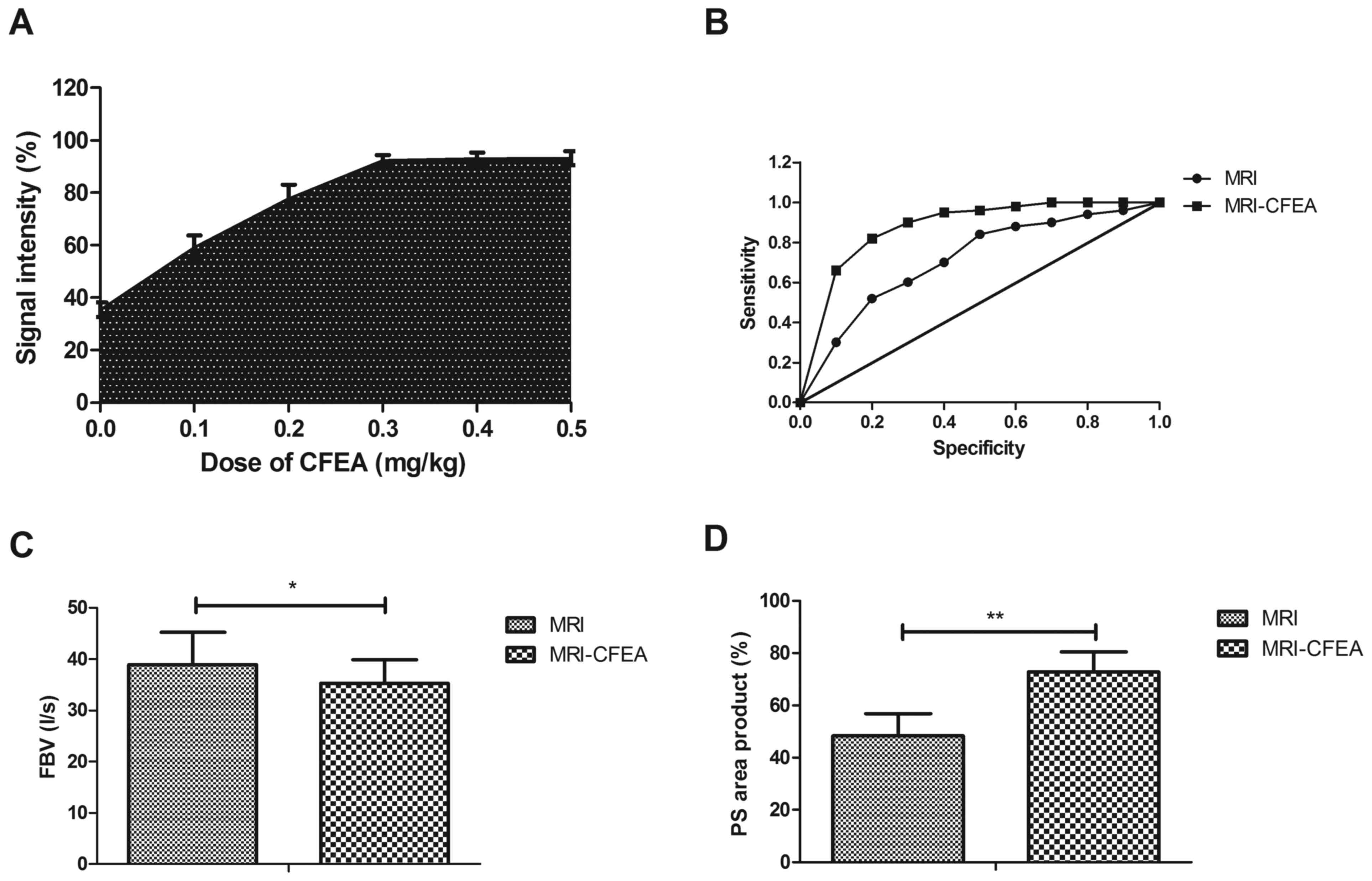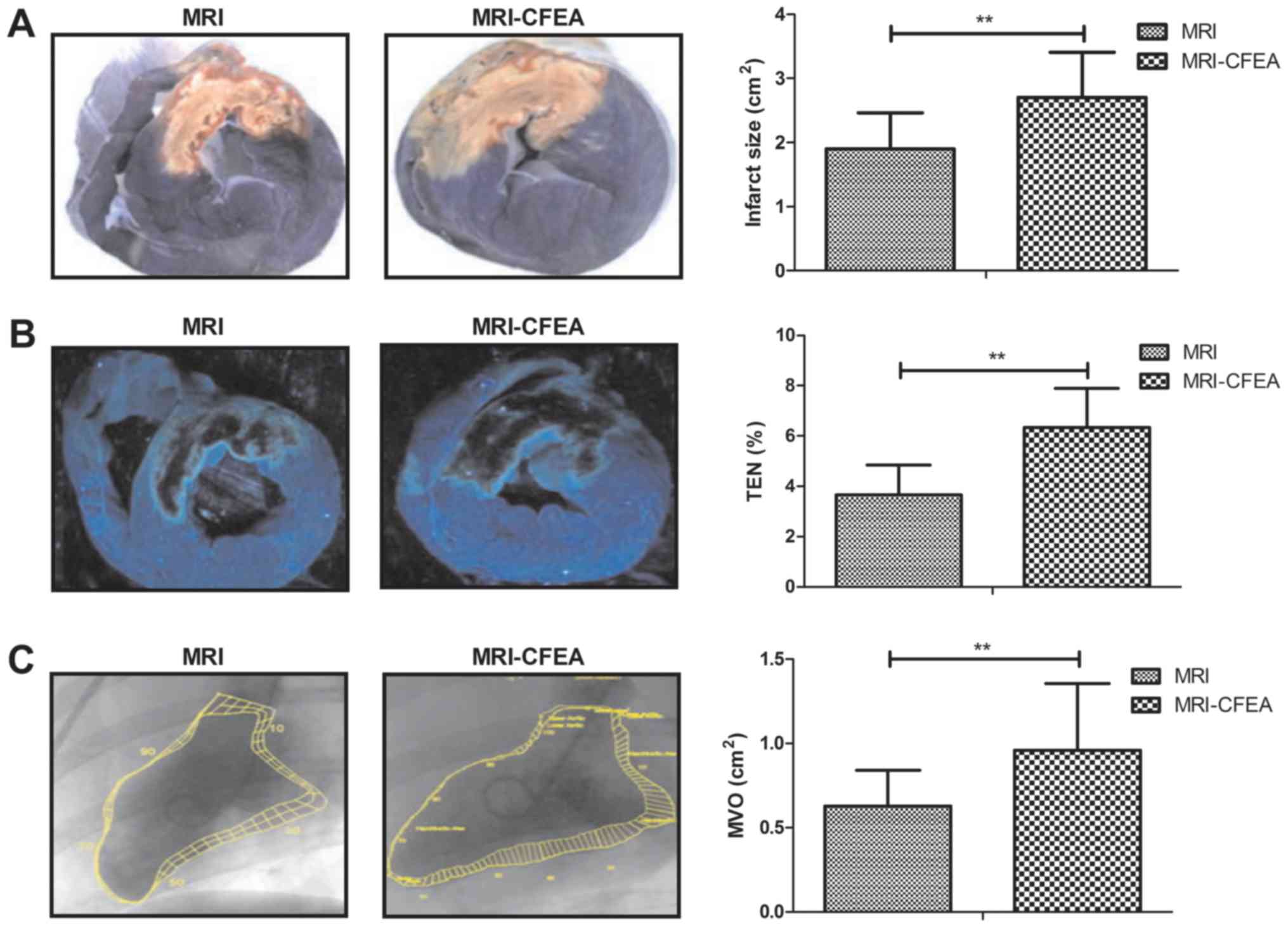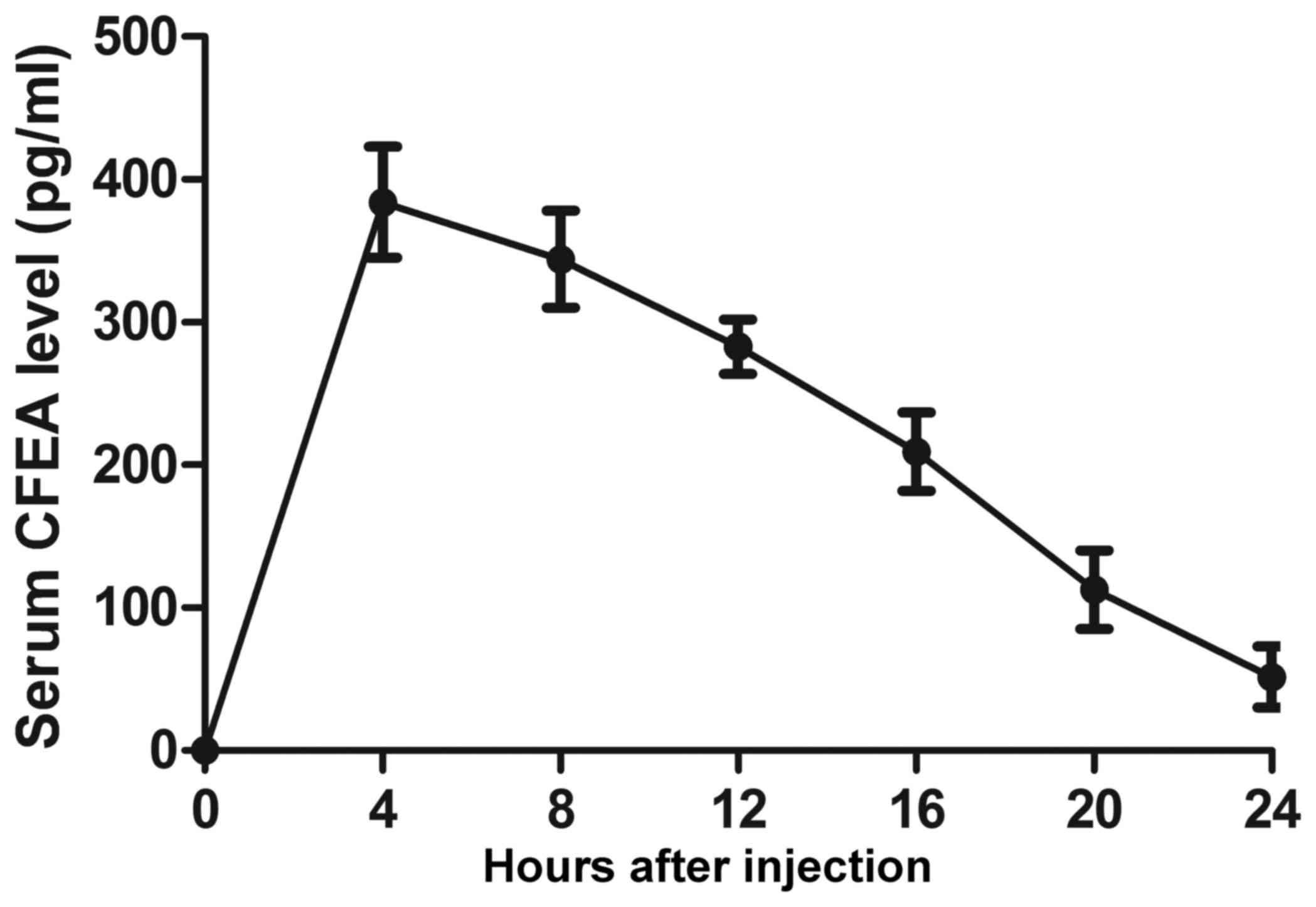|
1
|
Nam J, Caners K, Bowen JM, Welsford M and
O'Reilly D: Systematic review and meta-analysis of the benefits of
out-of-hospital 12-lead ECG and advance notification in ST-segment
elevation myocardial infarction patients. Ann Emerg Med.
64:176–186.e9. 2014. View Article : Google Scholar : PubMed/NCBI
|
|
2
|
Barauskas M, Unikas R, Tamulenaite E and
Unikaite R: The impact of clinical and angiographic factors on
percutaneous coronary angioplasty outcomes in patients with acute
ST-elevation myocardial infarction. Arch Med Sci Atheroscler Dis.
1:e150–e157. 2016.PubMed/NCBI
|
|
3
|
Sarikamis C, Caglar NT, Biyik I, Ozturk D,
Uzun F, Akturk IF, Ayaz A, Tasbulak O, Celik O and Yalcin AA: Can
thrombectomy and catheters used increase angiographically visible
distal embolization in st elevation myocardial infarction? Arch Med
Sci Atheroscler Dis. 1:e139–e144. 2016.PubMed/NCBI
|
|
4
|
Woolf-May K and Meadows S: Appropriateness
of the metabolic equivalent (MET) as an estimate of exercise
intensity for post-myocardial infarction patients. BMJ Open Sport
Exerc Med. 2:e0001722016. View Article : Google Scholar : PubMed/NCBI
|
|
5
|
Nascimento BR, de Sousa MR, Demarqui FN
and Ribeiro AL: Risks and benefits of thrombolytic, antiplatelet,
and anticoagulant therapies for st segment elevation myocardial
infarction: Systematic review. ISRN Cardiol. 2014:4162532014.
View Article : Google Scholar : PubMed/NCBI
|
|
6
|
El Aidi H, Adams A, Moons KG, Den Ruijter
HM, Mali WP, Doevendans PA, Nagel E, Schalla S, Bots ML and Leiner
T: Cardiac magnetic resonance imaging findings and the risk of
cardiovascular events in patients with recent myocardial infarction
or suspected or known coronary artery disease: A systematic review
of prognostic studies. J Am Coll Cardiol. 63:1031–1045. 2014.
View Article : Google Scholar : PubMed/NCBI
|
|
7
|
Christensen AV, Koch MB, Davidsen M,
Jensen GB, Andersen LV and Juel K: Educational inequality in
cardiovascular disease depends on diagnosis: A nationwide register
based study from denmark. Eur J Prev Cardiol. 23:826–833. 2016.
View Article : Google Scholar : PubMed/NCBI
|
|
8
|
Han W, Xie M, Cheng TO, Wang Y, Zhang L,
Hu Y, Cao H, Hong L, Yang Y, Sun Z and Yu L: The vital role the
ductus arteriosus plays in the fetal diagnosis of congenital heart
disease: Evaluation by fetal echocardiography in combination with
an innovative cardiovascular cast technology. Int J Cardiol.
202:90–96. 2016. View Article : Google Scholar : PubMed/NCBI
|
|
9
|
Ahmad IG, Abdulla RK, Klem I, Margulis R,
Ivanov A, Mohamed A, Judd RM, Borges-Neto S, Kim RJ and Heitner JF:
Comparison of stress cardiovascular magnetic resonance imaging
(CMR) with stress nuclear perfusion for the diagnosis of coronary
artery disease. J Nucl Cardiol. 23:287–297. 2016. View Article : Google Scholar : PubMed/NCBI
|
|
10
|
Nensa F, Mahabadi AA, Erbel R and
Schlosser TW: Myocardial edema during acute myocardial infarction
visualized by diffusion-weighted MRI. Herz. 38:509–510. 2013.
View Article : Google Scholar : PubMed/NCBI
|
|
11
|
Yang Y, Graham JJ, Connelly K, Foltz WD,
Dick AJ and Wright GA: MRI manifestations of persistent
microvascular obstruction and acute left ventricular remodeling in
an experimental reperfused myocardial infarction. Quant Imaging Med
Surg. 2:12–20. 2012.PubMed/NCBI
|
|
12
|
Ahmed N, Carrick D, Layland J, Oldroyd KG
and Berry C: The role of cardiac magnetic resonance imaging (MRI)
in acute myocardial infarction (AMI). Heart Lung Circ. 22:243–255.
2013. View Article : Google Scholar : PubMed/NCBI
|
|
13
|
Rischpler C, Langwieser N, Souvatzoglou M,
Batrice A, van Marwick S, Snajberk J, Ibrahim T, Laugwitz KL,
Nekolla SG and Schwaiger M: PET/MRI early after myocardial
infarction: Evaluation of viability with late gadolinium
enhancement transmurality vs. 18F-FDG uptake. Eur Heart J
Cardiovasc Imaging. 16:661–669. 2015.PubMed/NCBI
|
|
14
|
Pegg TJ, Maunsell Z, Karamitsos TD, Taylor
RP, James T, Francis JM, Taggart DP, White H, Neubauer S and
Selvanayagam JB: Utility of cardiac biomarkers for the diagnosis of
type V myocardial infarction after coronary artery bypass grafting:
Insights from serial cardiac MRI. Heart. 97:810–816. 2011.
View Article : Google Scholar : PubMed/NCBI
|
|
15
|
Malbranque G, Serfaty JM, Himbert D, Steg
PG and Laissy JP: Myocardial infarction after blunt chest trauma:
Usefulness of cardiac ECG-gated CT and MRI for positive and
aetiologic diagnosis. Emerg Radiol. 18:271–274. 2011. View Article : Google Scholar : PubMed/NCBI
|
|
16
|
Zeng ZQ, Chen DH, Tan WP, Qiu SY, Xu D,
Liang HX, Chen MX, Li X, Lin ZS, Liu WK and Zhou R: Epidemiology
and clinical characteristics of human coronaviruses OC43, 229E,
NL63, and HKU1: A study of hospitalized children with acute
respiratory tract infection in Guangzhou, China. Eur J Clin
Microbiol Infect Dis. 37:363–369. 2018. View Article : Google Scholar : PubMed/NCBI
|
|
17
|
Kousi E, Smith J, Ledger AE, Scurr E,
Allen S, Wilson RM, O'Flynn E, Pope RJE, Leach MO and Schmidt MA:
Quantitative evaluation of contrast agent uptake in standard
fat-suppressed dynamic contrast-enhanced MRI examinations of the
breast. Med Phy. 45:287–296. 2018. View
Article : Google Scholar
|
|
18
|
Chen CL, Hu GY, Mei Q, Qiu H, Long GX and
Hu GQ: Epidermal growth factor receptor-targeted ultra-small
superparamagnetic iron oxide particles for magnetic resonance
molecular imaging of lung cancer cells in vitro. Chin Med J (Engl).
125:2322–2328. 2012.PubMed/NCBI
|
|
19
|
Mehmood T, Al Shehrani MS and Ahmad M:
Acute coronary syndrome risk prediction of rapid emergency medicine
scoring system in acute chest pain. An observational study of
patients presenting with chest pain in the emergency department in
Central Saudi Arabia. Saudi med J. 38:900–904. 2017. View Article : Google Scholar : PubMed/NCBI
|
|
20
|
Sahibzada I, Batura D and Hellawell G:
Validating multiparametric MRI for diagnosis and monitoring of
prostate cancer in patients for active surveillance. Int Urol
Nephrol. 48:529–533. 2016. View Article : Google Scholar : PubMed/NCBI
|
|
21
|
Andrade JM, Gowdak LH, Giorgi MC, de Paula
FJ, Kalil-Filho R, de Lima JJ and Rochitte CE: Cardiac MRI for
detection of unrecognized myocardial infarction in patients with
end-stage renal disease: Comparison with ECG and scintigraphy. AJR.
Am J Roentgenol. 193:W25–W32. 2009. View Article : Google Scholar
|
|
22
|
Lee HY, Choi JS, Guruprasath P, Lee BH and
Cho YW: An electrochemical biosensor based on a myoglobin-specific
binding peptide for early diagnosis of acute myocardial infarction.
Anal Sci. 31:699–704. 2015. View Article : Google Scholar : PubMed/NCBI
|
|
23
|
Westwood M, van Asselt T, Ramaekers B,
Whiting P, Thokala P, Joore M, Armstrong N, Ross J, Severens J and
Kleijnen J: High-sensitivity troponin assays for the early rule-out
or diagnosis of acute myocardial infarction in people with acute
chest pain: A systematic review and cost-effectiveness analysis.
Health Technol Assess. 19:1–234. 2015. View
Article : Google Scholar
|
|
24
|
Gunebakmaz O, Duran M, Kaya Z and Kaya MG:
Contrast agent: A scapegoat for serum creatinine increase in
patients with acute myocardial infarction undergoing coronary
angiography. Angiology. 64:4002013. View Article : Google Scholar : PubMed/NCBI
|
|
25
|
Flavian A, Carta F, Thuny F, Bernard M,
Kober F, Moulin G, Varoquaux A and Jacquier A: Cardiac MRI in the
diagnosis of complications of myocardial infarction. Diagn Interv
Imaging. 93:578–585. 2012. View Article : Google Scholar : PubMed/NCBI
|
|
26
|
Yang J, Ma H, Liu J, Wang C, Shi Y, Xie H,
Huo F, Liu F and Lin K: Delayed-enhancement magnetic resonance
imaging at 3.0T using 0.15 mmol/kg of contrast agent for the
assessment of chronic myocardial infarction. Eur J Radio.
83:778–782. 2014. View Article : Google Scholar
|
|
27
|
Lim HE, Yong HS, Shin SH, Ahn JC, Seo HS,
Oh DJ, Ro YM and Park CG: Early assessment of myocardial
contractility by contrast-enhanced magnetic resonance (ceMRI)
imaging after revascularization in acute myocardial infarction
(AMI). Korean J Intern Med. 19:213–219. 2004. View Article : Google Scholar : PubMed/NCBI
|
|
28
|
Nagata Y, Usuda K, Uchiyama A, Uchikoshi
M, Sekiguchi Y, Kato H, Miwa A and Ishikawa T: Characteristics of
the pathological images of coronary artery thrombi according to the
infarct-related coronary artery in acute myocardial infarction.
Circ J. 68:308–314. 2004. View Article : Google Scholar : PubMed/NCBI
|
|
29
|
Coker A, Arman A, Soylu O, Tezel T and
Yildirim A: Lack of association between IL-1 and IL-6 gene
polymorphisms and myocardial infarction in Turkish population. Int
J Immunogenet. 38:201–208. 2011. View Article : Google Scholar : PubMed/NCBI
|
|
30
|
Beg M, Singhal KC, Wadhwa J and Akhtar N:
ST-deviation, C-reactive protein and CPK-MB as mortality predictors
in acute myocardial infarction. Nepal Med Coll J. 8:149–152.
2006.PubMed/NCBI
|
|
31
|
Vörös K, Prohászka Z, Kaszás E,
Alliquander A, Terebesy A, Horváth F, Janik L, Sima A, Forrai J,
Cseh K and Kalabay L: Serum ghrelin level and TNF-α/ghrelin ratio
in patients with previous myocardial infarction. Arch Med Res.
43:548–554. 2012. View Article : Google Scholar : PubMed/NCBI
|
|
32
|
Zeybek U, Toptas B, Karaali ZE, Kendir M
and Cakmakoglu B: Effect of TNF-alpha and IL-1β genetic variants on
the development of myocardial infarction in Turkish population. Mol
Biol Rep. 38:5453–5457. 2011. View Article : Google Scholar : PubMed/NCBI
|

















